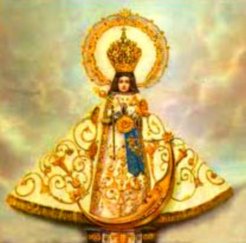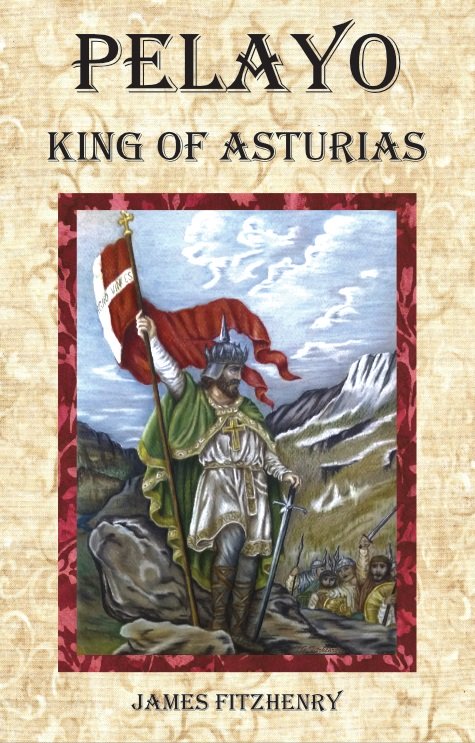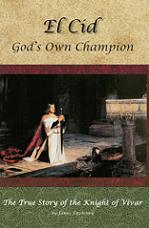Our Lady of Zapopan

October 12: Our Lady of Zapopan
(Nuestra Senora de Zapopan)
Today the village of Zapopan is a quiet little place not many miles from Guadalajara by an excellent highway. Its tranquility and religious atmosphere must be a far cry from pre-Conquest times, when it was a feudal district and tributary of the powerful King of Tonala. In those days the Indians of the district worshiped an idol called Teopintzintl, “The Child God,” to which they offered gifts of hare and partridge. When the kingdom of Tonala bowed to Nuno de Guzman in 1530, Zapopan came under Spanish dominion. The Indian queen, Chihuapili Tzapotzinco, ordered all the chieftains under her rule to render their obedience to the Spanish Crown, and in March of 1530 the cacique of Atemajac, under whose jurisdiction lay Zapopan, complied with this order. The Mixton War of 1541, however, depopulated the district, and the encomendero of Tlaltenango, Francisco de Bobadilla, obtained the Viceroy’s permission to repopulate Zapopan with Indians from Tlaltenango, thus lessening the chance of another uprising.
On the eighth of December, 1541, the pueblo of Zapopan was resettled in accordance with the agreement, and on that day the Franciscan Fray Antonio de Segovia gave to the newly settled colony a small image of Our Lady of the Immaculate Conception. For ten years it had accompanied him on his apostolic journeys. In fact, only a short while before, while the Mixton War was still in progress, Fray Antonio, with his missionary companion Fray Miguel de Bolonia, had gone among the warring Indians, the image about his neck, exhorting them to make peace with the Spaniards. It is related that while Fray Antonio was preaching, the Indians saw luminous rays issuing from the image of Our Lady, and that this fact, as much as his preaching, caused them to stop fighting. In thirty-six hours Fray Antonio de Segovia brought to the Viceroy for pardon more than six thousand Indians, who had laid down their arms. From that time Fray Antonio called the image La Pacificadora, “She Who Makes Peace.”
The image is made of pasta de Michoacan – pieces of cornstalk smoothed and cemented together by glue. It is little more than thirteen inches in height, and represents the Virgin Mary under her title of the Immaculate Conception. The hands, joined before the breast, are of wood. The original sculpture donated by Fray Antonio de Segovia consisted only of the upper half, it is believed, the lower section having been added at a later date. As the lower half is not in proportion to the upper, the reconstruction gives a stunted effect to the image. However, since the original sculptured garments nowadays are always covered with rich vestments of fabric, the disproportion is not apparent.
In its sculptured form, the statue represents Our Lady standing with her feet upon a rudely formed crescent moon. She wears a red tunic and a dark blue mantle outlined in gold. The eyes are painted, and the somewhat thick lips are closed. One may find much to be desired in the image, considered as a work of art. Yet we must remember that it has the honor of being the first image of the Virgin Mary venerated in the State of Jalisco, and that it has seen the Church in that part of Mexico grow from the tiniest seed to the great, many-branched tree of the present-day Catholic Faith. Furthermore, for over four centuries, Our Lady of Zapopan has been a constant channel of heavenly favors to the people of Jalisco.
Our Lady of Zapopan
It was Diego de Herrera, pastor of Zapopan from 1637, who first learned of the special regard in which the natives of Zapopan held the image. In 1653, after careful investigation of the facts, the Bishop of Guadalajara, Don Juan Ruiz Colmenero, issued a decretal declaring the image “miraculous” and appointing the eighteenth of December as the annual celebration of the Feast of Our Lady of the Expectation of Zapopan. Under this title the image is still venerated today.
There are other titles of Our Lady of Zapopan for which she is justly celebrated. These are: Patroness of Guadalajara, General of the Armies, and Queen of Jalisco. Each of the three has its proper history.
The end of the seventeenth century saw Guadalajara scourged by a terrible epidemic. The Bishop ordered the statue of Our Lady of Zapopan to be carried in procession from its temple into the cathedral of Guadalajara. There is in the ecclesiastical archives a sworn testimonial from the medical profession in Guadalajara, certifying that, following this procession, the plague ceased at once. In 1721, with the onslaught of another plague, Our Lady’s image was again brought to Guadalajara and carried from one barrio to another, again effecting a cessation of the plague. Our Lady was also invoked for protection against the violent storms and lightning which threaten Guadalajara during the rainy season.
For these and other reasons Our Lady of Zapopan was officially declared Patroness of Guadalajara specifically “against storms, lightning, and epidemics.” Accordingly, each year from 1734 up to the present day, Our Lady of Zapopan leaves her sanctuary on the thirteenth of June and all through the rainy season, until the fourth of October, visits the churches in every barrio of Guadalajara.
In 1821, the “Year of Independence,” the achievement of independence took place on the thirteenth of June, at the time Our Lady’s image was entering Guadalajara for her annual pilgrimage. Accordingly the government of Jalisco decided to commission Our Lady of Zapopan “General of the Army of the State.” On the fifteenth of September in that year, in the presence of the officials of both Church and State, the venerable image was vested in the blue shoulder sash and gold baston of a general. In 1852, while Guadalajara was in a state of siege, with the water supply og the city cut off, General Blancarte placed a new sash of rank on Our Lady of Zapopan and had a twenty-one-gun salute fired in her honor, reinvoking her as Patroness and General of the army of Jalisco. Once again the Virgin effectively protected her city. In 1894 the Governor of Jalisco made a similar proclamation, and bestowed a new sash upon the image.
In the year 1919 Our Lady of Zapopan received a new honor, this time from the Vatican. On the seventeenth of June in that year, the Vatican Chapter decreed the canonical Coronation of Our Lady of Zapopan. The sacred image was solemnly invested with a golden crown in the cathedral of Guadalajara.
*from Mexico Land of Mary's Wonders, Joseph Cassidy
Marian Calendar, roman-catholic-saints.com
Return to Titles of Mary from Our Lady of Zapopan
Return to Marian Calendar October from Our Lady of Zapopan
Return to Roman Catholic Saints Homepage from Our Lady of Zapopan
NOW AVAILABLE!!
Pelayo's resistance initiated the nearly 800-year-long Reconquista to take back his country from the ruthless invader who had conquered his homeland and sought to erase his culture and his faith. His actions would lay the foundations of a Kingdom for Christ that would eventually reach around the world and spread the Catholic faith to millions of souls. Read more...
Please help us continue to bring high quality books to our readers at the lowest possible price! Click the link below! Thank you!
Now Available!
Defenders of Christendom
Battles - Honor - Miracles!
This book is filled with
amazing stories of little-known
Catholic heroes presenting
spectacles of bravery and
valor never exceeded in all the annals of history.
Demonstrating his
gallantry through daring feats
of arms, the knight's faith,
coupled with his marvelous
courage, made him nearly
invincible on the field
of battle.
read more . . .
Defenders of Christendom is
Learning to Love God
Especially for young children -
Now available as an e-book!
Available for only $2.99 US
as an ebook download.
Also available in Spanish!
The exciting life story of
the holy Catholic knight
known as El Cid!
Available for only
$22.95
The amazing life story of the
little known incorrupt saint
- King Fernando III!
This highly acclaimed book is
inspirational to young men
and a guide to building a strong
masculine, Catholic character!
Also available as softback!








